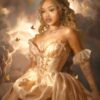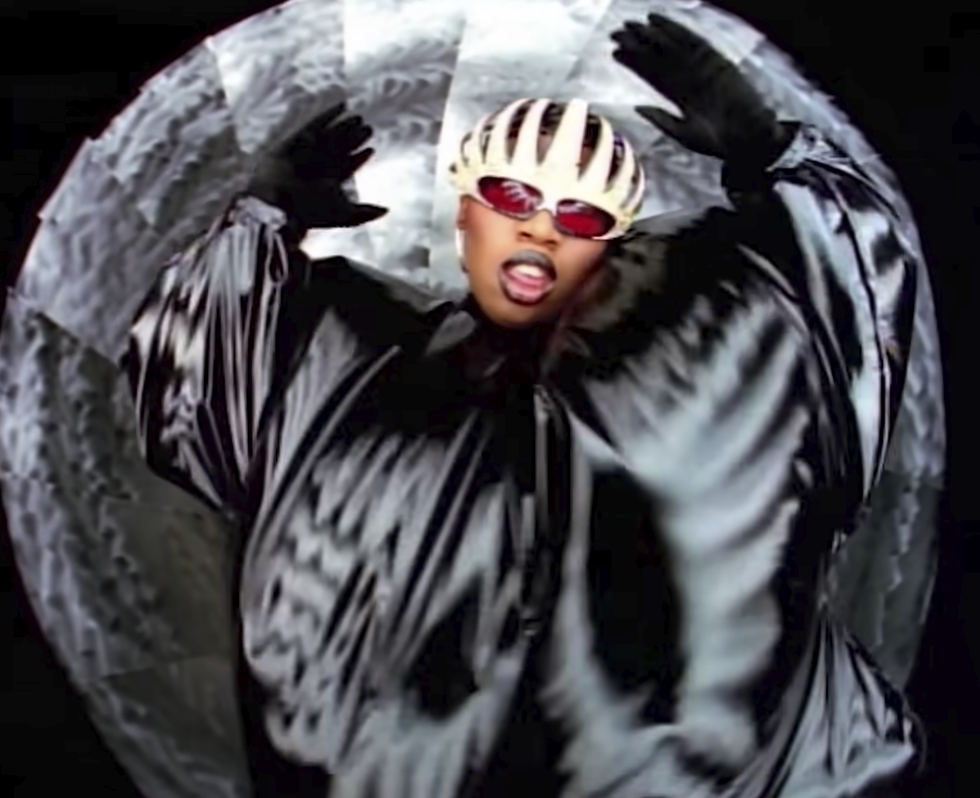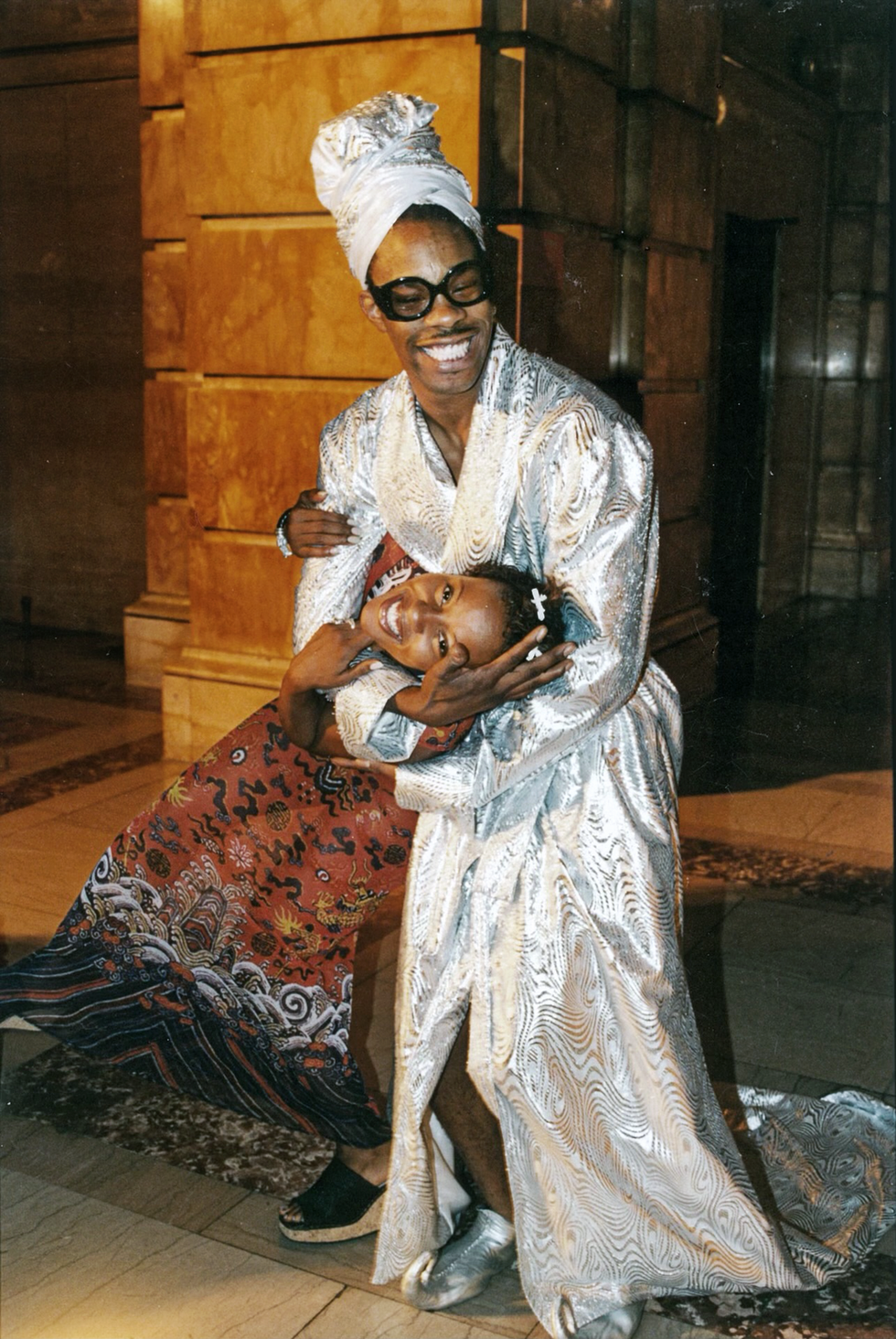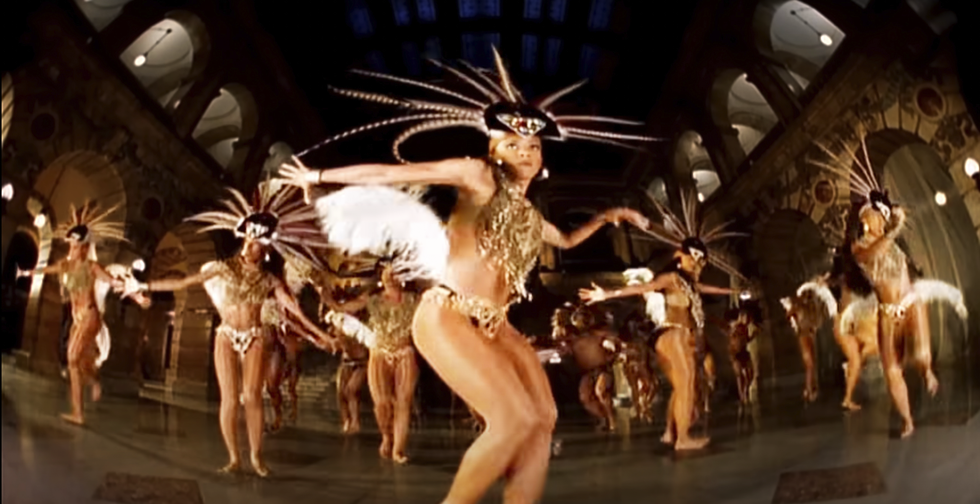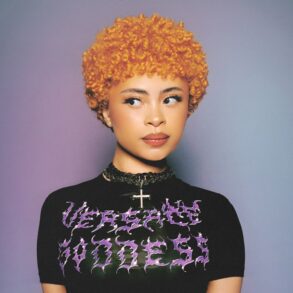When DJ Kool Herc first experimented with twin turntables and breakbeats in the Bronx in 1973, he didn’t just initiate a new musical genre, he ignited an entire cultural movement built by—and for—people of color. The birth of hip-hop cracked open a world of opportunity for young DJs, rappers, musicians, poets, dancers, and designers who were eager to make their mark. Early on, it was a world that didn’t always make space for women. But they were always there, behind the scenes and on the mic, creating the framework for what hip-hop would sound, look, and feel like for generations to come.
In 1988, at the age of 17, Lana Michele Moorer, better known as MC Lyte, became the first solo female rapper to release a full-length album, with her critically acclaimed Lyte as a Rock. From there, she continued to make history, becoming the first rap artist to perform at Carnegie Hall, in 1990, and the first solo female rapper to score a certified gold single, for 1993’s “Ruffneck.” Known for lyrics that addressed the crack epidemic and criticized the rampant misogyny within hip-hop, Lyte helped pave the way for women like Missy Elliott, Queen Latifah, and Lisa “Left Eye” Lopes, artists with whom—along with LL Cool J, Busta Rhymes, and many more—she would go on to collaborate.
Behind the scenes, June Ambrose and Fatima Robinson were forging the visual language of hip-hop through their respective roles of designing costumes for and choreographing music videos. “The crazy part is, we didn’t know we were doing it,” says Robinson, who pioneered the hip-hop dance style. “We were just doing it to have fun.”
More From Harper’s BAZAAR

Ambrose’s most iconic work includes the concept for the inflatable suit worn by Missy Elliott in her 1997 video for “The Rain (Supa Dupa Fly),” though the designer, now a creative director for Puma, outfitted everyone from Diddy to Mary J. Blige and Jay-Z.
Robinson, who worked on many of the same sets, dreamed up groundbreaking moves for Aaliyah and Busta Rhymes, among others, and she is currently the director of choreography on Beyoncé’s Renaissance tour.
In June, Lyte curated I Am Woman: A Celebration of Women in Hip Hop at the Kennedy Center, where she serves on the Hip Hop Culture Council. The event featured performances by a slate of trailblazing MCs, including Rapsody, Mama Sōl, Kash Doll, and Bahamadia.
Lyte, Ambrose, and Robinson recently connected to discuss hip-hop’s evolution over the past 50 years and how it continues to inform—and define—popular culture today.
JUNE AMBROSE: Lyte, you spearheaded a big performance at the Kennedy Center in June to celebrate the 50th anniversary of hip-hop. Why was it important to you to highlight female rappers?
MC LYTE: I’m all about helping to shine a light on all of those who don’t always get the eyes and the attention that they deserve. For me, legacy is about creating these types of celebrations. When you think about the legacy of hip-hop, what comes to mind?
JA: That’s such a great question. It’s always on my mind. I think about artists like Queen Latifah, Missy Elliott, [Lil’] Kim, Salt-N-Pepa, and yourself. You ladies were the foundation. I feel a great sense of pride being at the forefront of imagining images far beyond what the culture was projecting. We’ve evolved as women in so many ways—our sexuality, our animated versions of ourselves. Fatima and I were in the trenches together for a lot of that reimagining. We felt a sense of responsibility, a sense of fellowship.
FATIMA ROBINSON: June, you really had a vision. You convinced people to do things that their minds couldn’t conceive of yet. The projects we worked on with [music-video director] Hype Williams moved the culture forward in such a major way.
JA: We didn’t have social media. We didn’t have anyone to tell us if it was wack. We also didn’t have to ask for permission. I still tap into that memory of canceling out the noise and ask myself to be as fearless and curious as I was then.
FR: Back then, hip-hop dance wasn’t taught anywhere. Whatever city I was in, I would go to the club, because that’s where all the latest moves were being created and shared, and battling was part of what you did in the clubs and how you gained popularity. My goal was to make people see hip-hop dance as a true art form. The more popular I got, the bigger jobs I got, the more commercials and movies I got; I still represented hip-hop as my true art form.
As I continued to choreograph, I started to mix different styles of dance with mine. I went to flamenco classes [to get ideas] for Aaliyah’s “Are You That Somebody?” and to tango classes for [Dr.] Dre’s “Been There Done That.” I just always was trying to continue to elevate the dance by blending it with different other styles. Now, hip-hop is taught everywhere. What the kids have taken it to is really, really, really amazing.
JA: That makes me look at you as a pioneer even more, because hip-hop wasn’t popular in fashion either. They made us feel like “Oh, this is a small genre of music.” I had to design the look of it because high fashion didn’t really see us. Fatima, you’re a phenomenon. The fact that you can sit here today and say that you told everybody, “I’m a hip-hop choreographer” makes me bow down to you even more. People said it wasn’t a thing, but you didn’t let that change what you knew to be something that was going to lead the culture forward. That’s amazing.
MCL: I can dissect almost anything that has to do with fashion and dance today and see hip-hop in it. Our eyes are trained. We’ve known hip-hop from its foundation. I’m so proud to be a part of something that wasn’t so easily digestible in the beginning but now is everywhere.
JA: It’s the number-one genre in the world. It’s insane.
MCL: Did either of you have a moment where you saw or heard something that made you say, “Oh, I want to do that. I want to work in that industry”? For me, it was sitting at my grandfather’s house and hearing Salt-N-Pepa being played on a radio downstairs in the middle of the courtyard. I ran down there to hear it, and that day said to me that I could do it.
JA: I grew up in the Bronx, which is the birthplace of hip-hop. I remember the beat-box cyphers on the corner, the rap battles after school. I remember the Furious Five, Kool Moe Dee, and all those guys who were coming out of the projects. Then there were the weekend bashments at the basketball courts. You looked forward to seeing B-boy battles happen. That was the soundtrack of my life growing up in the South Bronx. I always looked at them like these poets; they would tell stories, and then they would get into a beef, and the beef would be squashed verbally. … When I was first offered an opportunity to work with a hip-hop artist, I wanted to make them into a character that was aspirational and took me outside of my neighborhood. I always looked at hip-hop not in its present form but in its future form, what it could be. It wasn’t like high-fashion houses were lending us clothes. It wasn’t like we could just go into a store and buy a blow-up suit like the one I put Missy Elliott in for “The Rain.” But I took advantage of my background as a musical-theater major in school, and I made those looks. … I wanted to continue to do things that were mind-blowing because that was how I was going to grow as an artist. The art was shifting the culture. We started to see kids look and move like artists from hip-hop videos. That’s when I realized my superpower. I can stand here proud, knowing that I was part of that.
FR: I am a self-taught choreographer. I learned by growing up watching Solid Gold and Fame. But when Ralph McDaniels began producing his music-video show, Video Music Box, it became a way to learn different styles of dance, from New York to the Bay Area. Just seeing Rob Base’s “It Takes Two” and seeing Kwamé and Scoob and Scrap—I would record their music videos and watch them over and over and learn all the moves.
MCL: One of my favorite songs to record was “Paper Thin,” and for the video, we went down into the subway system and people that I knew showed up. April Walker was on the train and Swatch, who was one third of a dance group. We had the guys that danced for me, Leg 1 and Leg 2, and MC Serch from 3rd Bass, another rap group. It was solidarity, it was collaboration, it was everything. To dance on the train and show people throughout the United States what the New York City train system looked like was revolutionary. Then to have D-Nice show up at the end of the video and we take a walk around Astor Place in downtown, in the Village in New York, was another way of just exposing so much of the culture and New York City to the masses. Do either of you have a favorite video that you participated in making?
JA: I have so many. Between “Mo Money, Mo Problems,” between “The Rain,” between Busta Rhymes’s “Put Your Hands Where My Eyes Could See”—this is not fair..
FR: That’s exactly what I was going to say: Busta’s “Put Your Hands Where My Eyes Could See.” The crazy part is, I was in rehearsal with Aaliyah in L.A. when they asked me to choreograph it, so I turned it down. You know Hype’s persistent ass. He was like, “You got to do it. We got to figure it out.” I asked Aaliyah’s parents if they could fly her to New York so that we could continue rehearsal and I could do Busta’s music video. They did. I think she even was hanging out on set with us that day.
JA: That was a beast. I was literally gluing doilies on panties. If I could have pulled all those costumes and not had to build them, it would’ve been a different story. But it was so much fun.
MCL: It’s amazing to see where we are now in relation to where we came from; it is a delight. Regarding the evolution of the music, it feels like female MCs have always come in waves. In the mid ’80s, we had Salt-N-Pepa, Sparky D, Roxanne Shanté, and Sweet Tee—and then all of a sudden it kind of lulled. Then another boom came with myself, Queen Latifah, Monie Love, Ms. Melodie, Nefertiti, and Harmony. We were making a new way. Then there was another lull until the arrival of Lil’ Kim, Foxy [Brown], Eve, Missy Elliott, and so many others. After that, we hit a dead end. Lauryn Hill had set the bar so high that it took forever for a female MC to be welcomed back into the fold. Nicki Minaj had it on lock next, and now we have Flo Milli, Tierra Whack, Baby Tate, Rapsody, and of course Megan and Cardi. How have you seen the fashion and dance elements of hip-hop culture evolve?
FR: The internet really changed dance. Kids now can learn moves in their own bedrooms thanks to YouTube and TikTok. There are so many conventions of hip-hop dance being taught all around the world and so many entryways into the culture now. It’s exciting to see how it’s grown and amazing to see how it keeps evolving. Like I said, when the music changes, so does the dance.
JA: Within fashion, it’s been really nice to see how design houses are not just inviting hip-hop artists to the table but creating a sense of collaboration with them. I remember the early days with Missy, before brands were doing partnerships with artists. I was taking creative license to remix and reimagine sportswear in luxury fabrics. [Later] we partnered with Adidas and I was the creative director for her Respect M.E. collection there. Brands recognize that hip-hop culture drives sales, and if you look at all the fashion houses that are leaning into streetwear, it’s clearly not going away. We invested in high-fashion brands as a culture. They couldn’t escape us. They didn’t do us a favor. They partnered with people who were controlling the narrative. I think that’s an honest way to put it.


